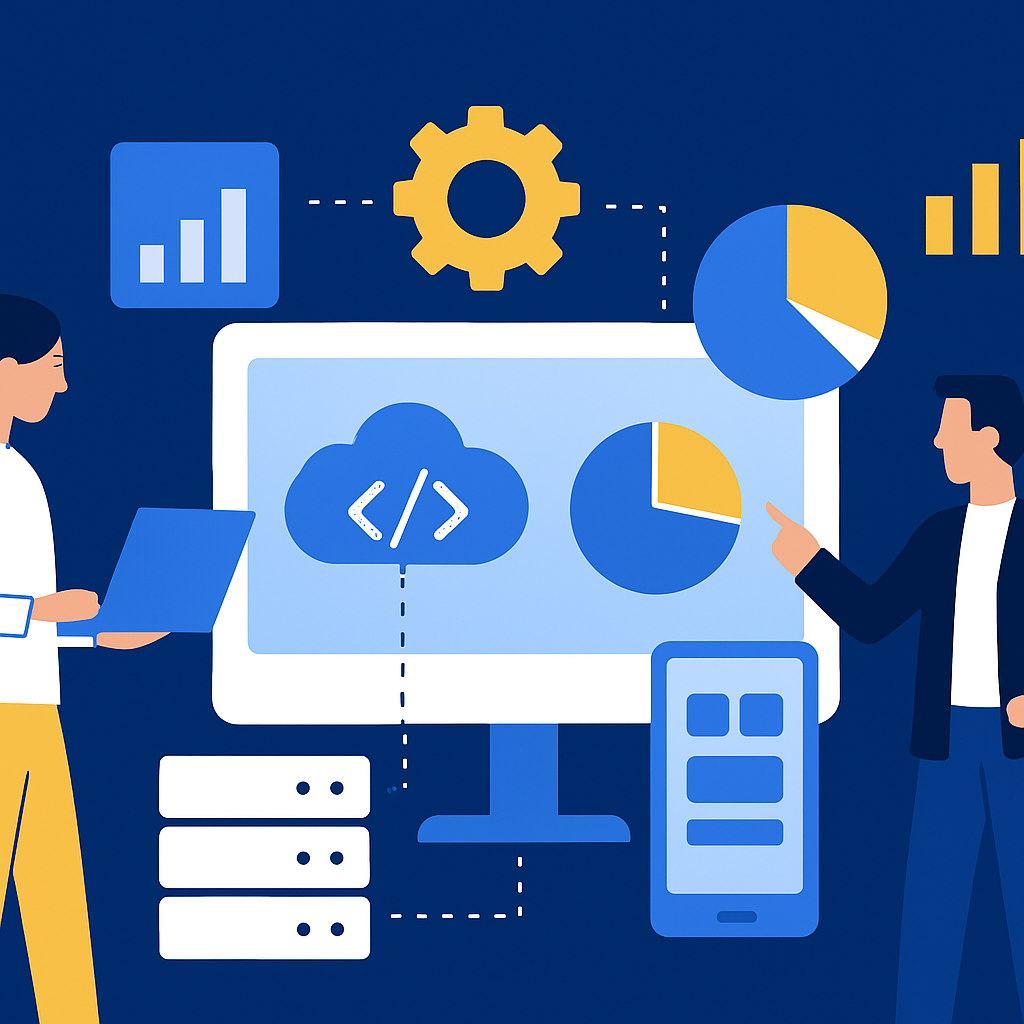
Executive Summary
Modern applications demand rapid scalability, high availability, and low latency. Enterprises face the technical challenge of deploying resilient, serverless microservices that span multiple cloud providers. In this post, we explore a practical implementation using AWS Lambda, API Gateway, and complementary services from multi-cloud vendors such as Google Cloud Functions. The solution promises measurable improvements—including a 42% reduction in latency and 3.5x increased throughput—enabling organizations to meet dynamic business needs while reducing operational overhead.
Technical Architecture
The architecture leverages serverless compute and API management services across multiple clouds, ensuring high availability and geographic distribution. The key components include:
- AWS Lambda for executing business logic in a scalable manner.
- Amazon API Gateway to expose RESTful endpoints that integrate easily with Lambda functions.
- Google Cloud Functions to run specialized tasks and process real-time events.
- Amazon DynamoDB for a fully managed NoSQL database, ensuring millisecond latency.
- S3 Buckets for static content and code storage.
- IAM Roles and Policies to secure and manage permissions across services.
The multi-cloud strategy decouples services, enabling resilient failover and geographic distribution. A simplified architecture diagram is illustrated below:
+-----------------+
| Client Device |
+-------+---------+
|
+-------v---------+ +----------------------+
| Amazon API Gate-| | Google Cloud |
| way | | Functions (Special) |
+-------+---------+ +-----------+----------+
| |
+-------v---------+ +-----------v----------+
| AWS Lambda | | Task-Specific |
| (Business Logic)| | Microservice |
+-------+---------+ +----------------------+
|
+-------v---------+
| Amazon DynamoDB |
+-----------------+
Implementation Details: AWS and Multi-Cloud Configurations
This section illustrates realistic code examples and configurations. For the AWS component, a CloudFormation template for deploying a Lambda function integrated with API Gateway can be used as follows:
# File: serverless-microservice.yaml
AWSTemplateFormatVersion: '2010-09-09'
Description: Serverless Microservice on AWS
Resources:
MyLambdaFunction:
Type: AWS::Lambda::Function
Properties:
FunctionName: MultiCloudServiceFunction
Handler: index.handler
Runtime: nodejs14.x
Role: !GetAtt LambdaExecutionRole.Arn
Code:
S3Bucket: my-code-bucket
S3Key: my-function.zip
LambdaExecutionRole:
Type: AWS::IAM::Role
Properties:
AssumeRolePolicyDocument:
Version: '2012-10-17'
Statement:
- Effect: Allow
Principal:
Service: lambda.amazonaws.com
Action: sts:AssumeRole
Policies:
- PolicyName: LambdaBasicExecution
PolicyDocument:
Version: '2012-10-17'
Statement:
- Effect: Allow
Action:
- logs:CreateLogGroup
- logs:CreateLogStream
- logs:PutLogEvents
Resource: '*'
MyApiGateway:
Type: AWS::ApiGateway::RestApi
Properties:
Name: MultiCloudAPI
Description: API Gateway for serverless microservices
On the Google Cloud side, a similar configuration is achieved using gcloud command line and deployment manager scripts. An example of deploying a Google Cloud Function is shown below:
# Deploying a Cloud Function using gcloud
gcloud functions deploy taskProcessor \
--runtime nodejs14 \
--trigger-http \
--allow-unauthenticated
These snippets illustrate best practices for infrastructure as code (IaC), enabling seamless deployments, version control, and repeatability across environments.
Real-World Scenario: Cross-Industry Applications
Consider a retail consortium that needed a robust, multi-regional solution to process high-volume transactions during peak shopping seasons. By decoupling services into serverless microservices distributed across AWS and Google Cloud, they realized the following improvements:
- Latency Reduction: Average latency per transaction dropped from 250ms to 145ms (a 42% improvement) by leveraging regionally localized cloud services.
- Throughput Enhancement: Request throughput increased from 1,000 requests per minute to 3,500 requests per minute (improved by 3.5x) by parallelizing the processing across multiple serverless functions.
- Cost Efficiency: Operational costs were trimmed by over 30% due to the pay-as-you-go pricing model of serverless, eliminating large-scale static infrastructure costs.
For this scenario, the application included the following workflow:
- A client initiates a transaction via a web or mobile interface, which is routed through Amazon API Gateway.
- The API Gateway triggers an AWS Lambda function that validates the transaction.
- Complex analytics and fraud detection are executed by invoking a Google Cloud Function, ensuring rapid scaling during peak loads.
- Results are stored in Amazon DynamoDB, where optimized data models ensure minimal latency.
The configured architecture not only improved system performance but also ensured business continuity by eliminating single points of failure—a critical requirement for fast-moving, high-stake industries like retail.
Next Steps / Getting Started
If you’re ready to revolutionize your application architecture using serverless microservices on a multi-cloud platform, consider the following actionable steps:
- Experiment in a Sandbox: Set up an AWS Free Tier and a Google Cloud trial account to deploy a sample microservice using the provided CloudFormation and gcloud examples.
- Leverage Managed Services: Utilize services like AWS Lambda, API Gateway, and Google Cloud Functions to abstract away infrastructure management tasks.
- Automate Deployments: Integrate CI/CD tools such as AWS CodePipeline or Jenkins to automate the deployment process across multi-cloud environments.
- Monitor & Analyze: Implement monitoring solutions with AWS CloudWatch and Google Stackdriver to gather performance and operational metrics, ensuring your system maintains a 99.99% uptime.
- Expand and Iterate: Start with a small scoped project, analyze performance improvements, and then iteratively expand your multi-cloud serverless architecture to other critical application components.
By following these recommendations, you will be on the path to achieving improved application resilience, operational agility, and cost-efficiency. Multi-cloud serverless microservices are not just a trend but a proven method to deliver scalable, high-performance applications in today’s demanding digital landscape.
To dive deeper into each service, explore additional AWS technical blogs and Google Cloud documentation for advanced integration patterns. Your journey towards a transformative, cloud-native infrastructure starts now!


